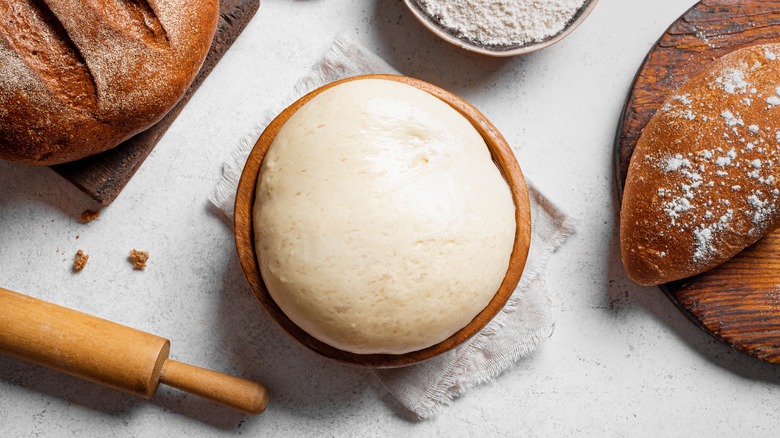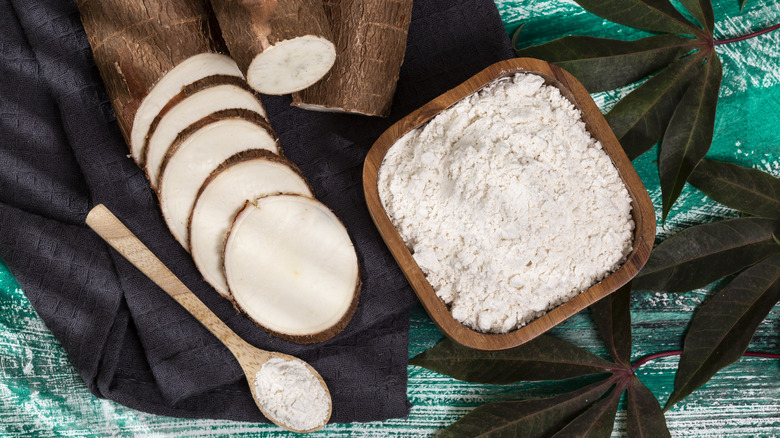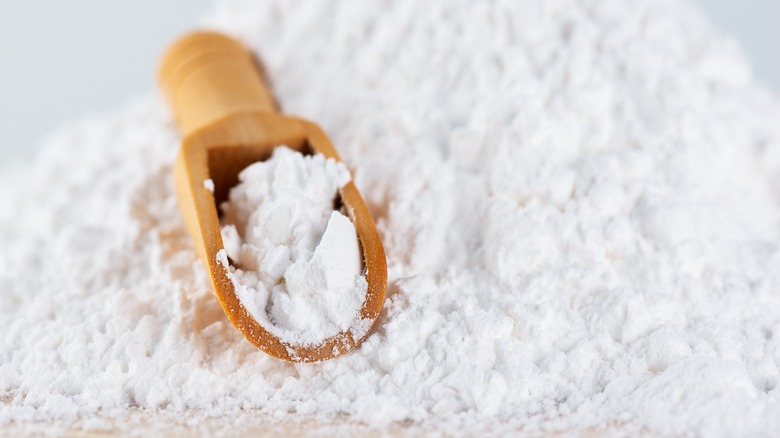Cassava Flour Is Your Best Weapon Against Soggy Gluten-Free Bread
Gluten-free breads are often expensive, and making a loaf at home can help save you some dough. But if you've ever played around with different gluten-free flour mixes, ratios, and recipes, you may have been left with a somewhat soggy-bottomed loaf. There's an easy fix for this, and it's sitting in the baking aisle.
Cassava flour is made from the cassava plant, native to South America. The plant produces a tuber, which is a root vegetable that grows underground and is similar to a potato or yam. Cassava root has a nutty flavor and a very high starch content, which makes its ground-up flour perfect for combatting sogginess in your gluten-free bread.
Cassava flour is more absorbent and slightly denser than all-purpose flour made from wheat. In gluten-free bread dough, it will sop up the liquids in the recipe like a sponge. For this reason, you may need to add more wet ingredients to your gluten-free bread dough, or start with less cassava flour to begin with. It is recommended to start with ⅔ to ¾ cup of cassava flour for every one cup of wheat flour, and add more if necessary. There is a fine line between chalky and soggy, and it is always easier to add than to take away. Too much cassava flour will quickly take your gluten-free bread from fluffy and doughy to dry and crumbly.
Other ways cassava flour works for gluten-free bread
Out of all the gluten-free flour options available for bread making, cassava behaves the most like regular white flour, and can be substituted in most recipes at very close to a 1:1 ratio. Gluten is a protein found in wheat flour that provides structure to baked goods. The high carbohydrate content and starchiness in cassava flour not only prevent sogginess, but it has a stretchy stickiness that mimics the property of gluten. It also adds a chewiness to the texture of baked goods, like in this pão de queijo recipe.
If you're curious about swapping it in for your future gluten-free bread, cassava flour is readily available at most grocery stores in the baking section, and is easy to source online. It will stay fresh for a long time and, if stored correctly in an airtight container and stored in a dark and dry spot, it can keep for up to two years. As an added bonus, not only is cassava flour gluten-free, but it's also nut-free and grain-free, making it a go-to option for those with allergies or dietary restrictions who still want to enjoy bread and other classic baked goods.
Cassava flour and tapioca flour are not the same thing
Another similar gluten-free contender in baking is tapioca flour, also known as tapioca starch. Although it is made from the cassava plant, the two flours are typically not an even swap-in for one another in recipes. Cassava flour is made from the plant's entire root that is dried, peeled, and then ground. Tapioca flour comes from just the isolated starchy part of the plant that is extracted and ground into a powder.
Tapioca is a more processed and much finer flour compared to cassava, and doesn't work the same in baked goods. Almost all of the fiber and nutrients are removed in an extra step of processing the plant. This gives cassava flour the edge in fiber content, which also fortifies its thickening properties in baking and cooking. Tapioca is best used in smaller amounts or mixed with other flours as it tends to add a gumminess to baked goods, whereas cassava flour can stand on its own just like wheat flour.



